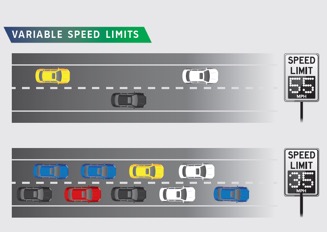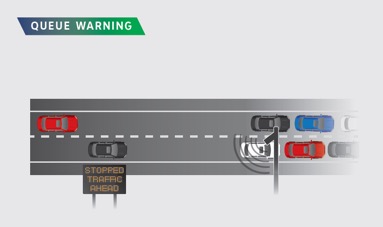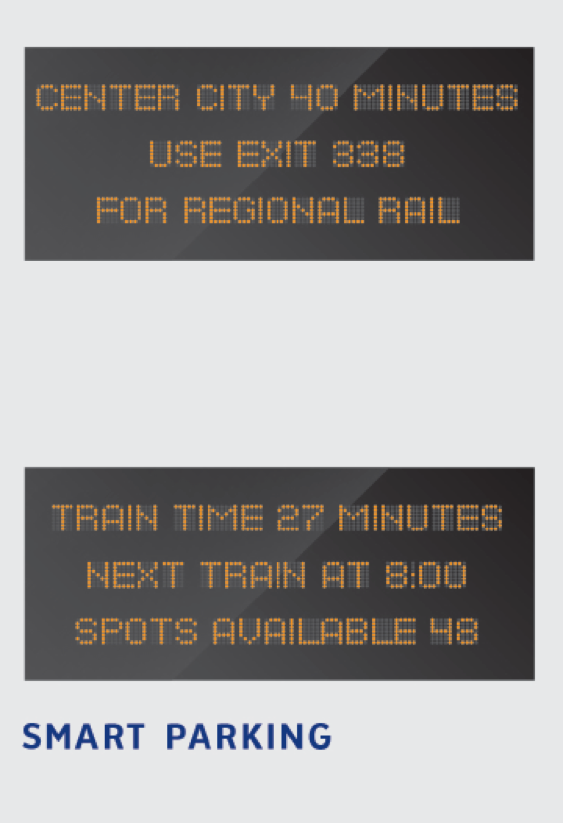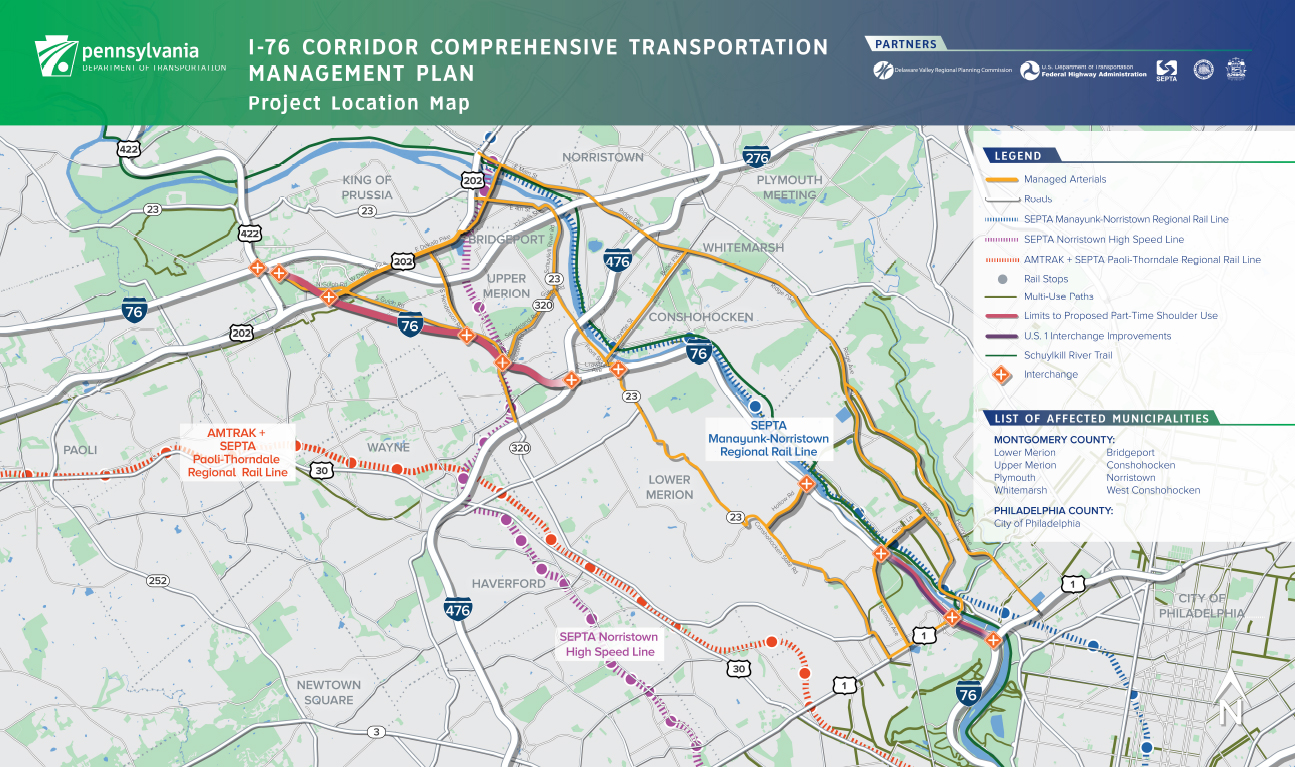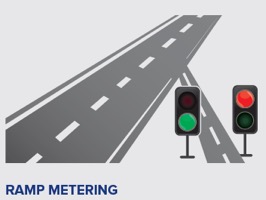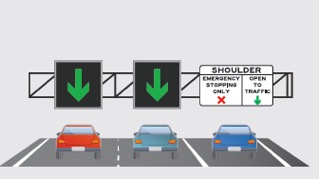What you can do to improve congestion on the Schuylkill Expressway

PHILADELPHIA (WPVI) -- Action News has heard your complaints and we've shown you the history of how the Schuylkill Expressway got to this point as one of America's most clogged highways.
So can anything be done to fix it?
Engineers say yes, but there's no magic wand to cure congestion. They believe the solution will be effective in total, when working in concert with each other, equaling more than the sum of its parts.

"It's not going to be a silver bullet," said Brad Rudolph, PennDOT Deputy Communications Director. "It's not going to move all the time. It's going to be congested but it's going to move more efficiently."
The root causes of congestion are clear. The Federal Highway Administration says recurring bottlenecks account for the biggest portion of the problem: 40%; crashes make up 25%; bad weather is to blame for 15%; then construction, 10%; and other causes.
Each of these issues needs to be addressed with a different fix. Some cannot be fixed at all.
What's in the Works
PennDOT is in the final stages of completing an $8 million project to improve the flow of traffic on the Schuylkill Expressway. It is part of a larger plan called Integrated Corridor Management.
By Summer 2019, the transportation department intends to activate digital speed signs, which are controlled remotely from the central traffic operations center in King of Prussia, Pennsylvania.
The old posted speed limits are being replaced with electronic ones that can change due to conditions, such as slower speeds required for inclement weather or because of an accident ahead.
However, don't expect to see speed limits raised above 55 mph when the weather is clear and traffic is light.
In conjunction with overhead digital signage that's already in place, called queue detection warning, PennDOT will be able to advise motorists to slow down before they run into a traffic jam and have to slam on the brakes.
With early enough warning, commuters could also opt to get off at an exit to avoid the situation and preferably take mass transit to finish the trip.
PennDOT wants to coordinate information with SEPTA to provide drivers real-time information on alternative options, including parking availability at train stations.
The signs would look something like this:
Either way, PennDOT says the signage will help alleviate some congestion.
"This is a lower cost solution that we think is going to be very, very effective once we use all the strategies in place hand and hand," said Rudolph. "So they all complement each other."
What's Down the Road
Since there's only so much that can be done to improve traffic on the highways, PennDOT is spearheading an effort to manage the roads that feed it, the so-called "arterials."
The plan is to coordinate traffic lights on roads leading to I-76. In essence, it's choreographing the number of commuters at key times.
"We've never owned and maintained signals before," said PennDOT's spokesperson. "So we're taking about 160 that we identified as paramount to moving traffic efficiently along that same stretch that we're working on the main line."
The agency will also use what's called ramp metering to regulate the rate at which cars get on the highway from an entrance ramp. Drivers of the Blue Route, I-476, may already be familiar with this mechanism.
"It allows us to kind of harmonize and evenly distribute traffic onto an interchange which really helps congestion," said Rudolph.
In total, PennDOT hopes these efforts can not only make life easier for commuters, but reduce the 400 to 500 yearly vehicle crashes on the Schuylkill Expressway.
"Several other states have used these strategies to reduce crashes, rear-ended crashes, we're talking about as much as 30%," said Rudolph.
The Schuylkill Stretch
If you can't physically expand the expressway, engineers decided maybe you could try to squeeze in an extra lane.
It won't be an addition, but rather a repurposing of the emergency shoulder into a drive lane for traffic, but only in certain places at certain times.
"That extra lane is only going to be operational when needed," said Rudolph. "So it's not an actual capacity adding project."
"It's not going to be three through lanes," he said. "It's going to be used as needed when traffic is at its peak and it warrants it."
In some cases, it may only be allowed for emergency vehicles. Signage will have to be installed to inform drivers if the lane is open to traffic, similar to what you may encounter on the bridges.
PennDOT is examining the feasibility of this project right now. The first target areas for reconstructing the roadway to accommodate this are both directions of I-76 between I-476 and US 202, and I-76 Westbound from US 1 North to Belmont Avenue/Green Lane exit.
"We're in preliminary engineering on that," said PennDOT's Rudolph. "I wouldn't expect construction on the lanes themselves to start until early 2020s to the mid 2020s. So it'll be a long process in getting the road constructed."
Just like driving on the Schuylkill, you'll need to be patient.
"They have a lot of clearances and right-of-way to acquire," said Rudolph. "There's a lot of formalities to go through."
Building It Better Together: What Can You Do?
Experts tend to keep going back to the same solution, and it will require sacrifice, or at least a cultural shift, on the part of drivers across the Delaware Valley.
The answer lies not in making it easier for more people to drive, but in persuading more people to drive less. That could mean walking or biking to work, carpooling, and of course utilizing mass transit more often.
"No matter what happens with road projects, improving capacity and widening roads, we need to strengthen our transit system" said Barry Seymour, Executive Director of the Delaware Valley Regional Planning, "because no matter whether we have self-driving cars or whether we have how many lanes of traffic on the Schuylkill Expressway, it'll never be enough."
"If we don't have a strong transit system, and find ways to make sure people can and want to use transit, we're going to drown in traffic," he said.
Alan Greenberger, former deputy mayor for economic development and director of commerce of Philadelphia in the Michael Nutter administration, said the trend is already moving in that direction.
"In fact, in the city itself," he said, "you see this more and more with the millennial population. They're very interested in bicycling, they're very interested in walking to work and increasingly they're interested in mass transit."
Greenberger argues solutions will become more a question of political will than engineering prowess.
"So, in a way, the cultural disposition of our citizens has shifted and that has put different pressures on a fixed amount of space," he said. "So, solving it is going to come down to policy choices rather than 'make the infrastructure work' choices."
Hearing From You
We also want to hear your ideas and solutions, in an effort to Build It Better Together.
Visit our Facebook page to join this important conversation.

